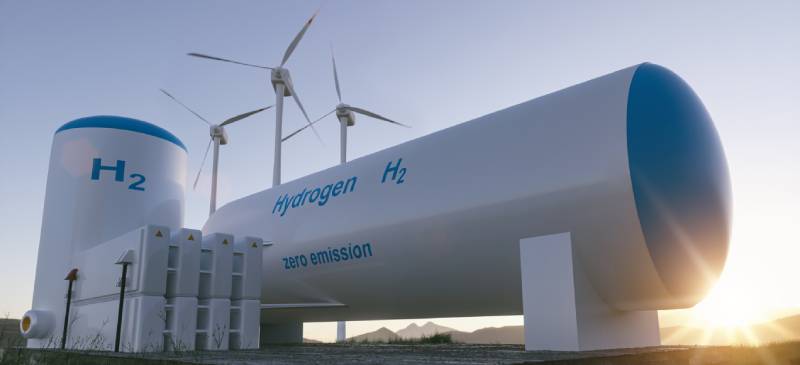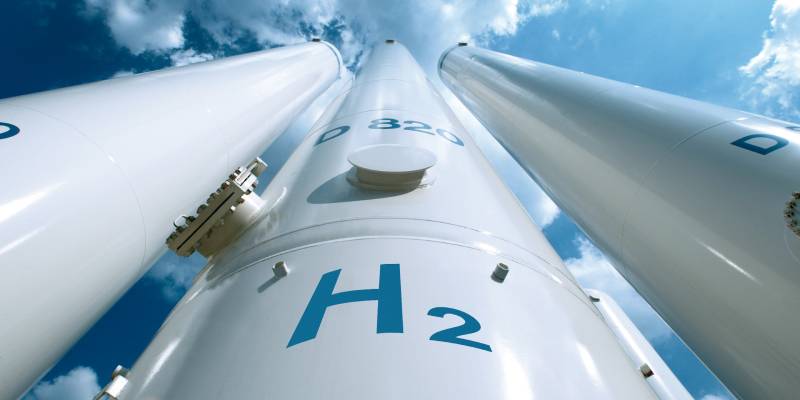- Home
- About us
- News
- Events
- EXPORT Export
-
BUY
Buy
Buy
- INVEST Invest
- COUNTRY BRAND Country Brand
-
INFORMATION CENTER
Information center
InformationCenterInformationCenterReports Country reports Department reports Foreign trade reports Product-Destination worksheet Sectors reports Work documentsStatistical information Classification Uruguay XXI Exports Imports Innovative National Effort Macroeconomic Monitor Tools Buyers Exporters Investors
- Contact
-
Languages
Green hydrogen: the choice of a thriving Latin American country to keep fostering the second phase of the energy transition
This excellent clean energy producer stands out in the Hydrogen industry - the key to decarbonization.
Share:

Hydrogen (H2) has become a crowd-puller when talking about decarbonization. It can be used as a new carrier of energy for domestic heating, mobility, production of fertilizers and to store up a large quantity of energy. It is produced by separating it from oxygen in the water using an electrolyzer. By carrying out this process with renewable energy, green hydrogen is obtained. Thus, producing a molecule that will be the key to decarbonization.
Most countries have started treading this path of decarbonization aiming at zero greenhouse gas emissions by 2050. Latin America is no stranger to this goal. In this regard, Uruguay stands out in the hydrogen industry.
Uruguay is known for its stability and ease of doing business. The country has continuously ranked first in Latin America and the Caribbean in indexes related to reliability, such as the Democracy Index, Rule of Law, and Low Corruption. Likewise, the country offers equal treatment for foreign and local investments while there is no local counterpart required to start a business. The exchange market is free and there are no restrictions on the repatriation of profits. What is more, there is only one national tax system paving the way for an easy entrance to the country. This makes the perfect seedbed for capital-based investments such as hydrogen production.
You might wonder why Uruguay set out on this specific journey. One thing is for sure, it’s no mere coincidence. Uruguay has natural resources that enabled the country to develop the first stage of the energy transition that succeeded in creating a clean electric matrix as 97% of it consists of renewables (hydro, wind, solar, and biomass power). These renewable sources can be complemented throughout the day or between seasons throughout the year.

With access to the Atlantic Ocean, Uruguay has adequate routes, railways with access to the port, and a network of rivers and roads that allows better competitiveness for transportation.
Additionally, the country promotes these kinds of industries with tax incentives. Free trade zones, the Investment Promotion Law, and many others create a powerful incentive scheme. In fact, the production of green hydrogen has recently been introduced into the Investment Promotion Law and is to be considered "high technology manufacturing". This way, green hydrogen projects will obtain the maximum score to access a larger exemption of Corporate Income Tax.
That’s not all. The government has promoted this sector and the energy transition by opening a call to develop H2 projects through a 10-million- dollar fund that supports projects up to 10 years in construction, production, and different applications of green H2 like heavy-duty transport, e-methanol, e-kerosene, green fertilizers and blends with natural gas. The call, open from April 8th to May 24th, will consider projects with power over 1.5 MW, and these will have to be running by 2025.
By such means, the Hydrogen Fund and the specific incentives are the door openers for many companies to thrive in this sector providing hydrogen to the local market and the world. These are only the first milestones of the Green Hydrogen Roadmap that is currently under validation to be published in no time.
In brief, this is how the world, including a small but promising country like Uruguay, by fostering these policies, brings a clean future more and more close.
For more information:
